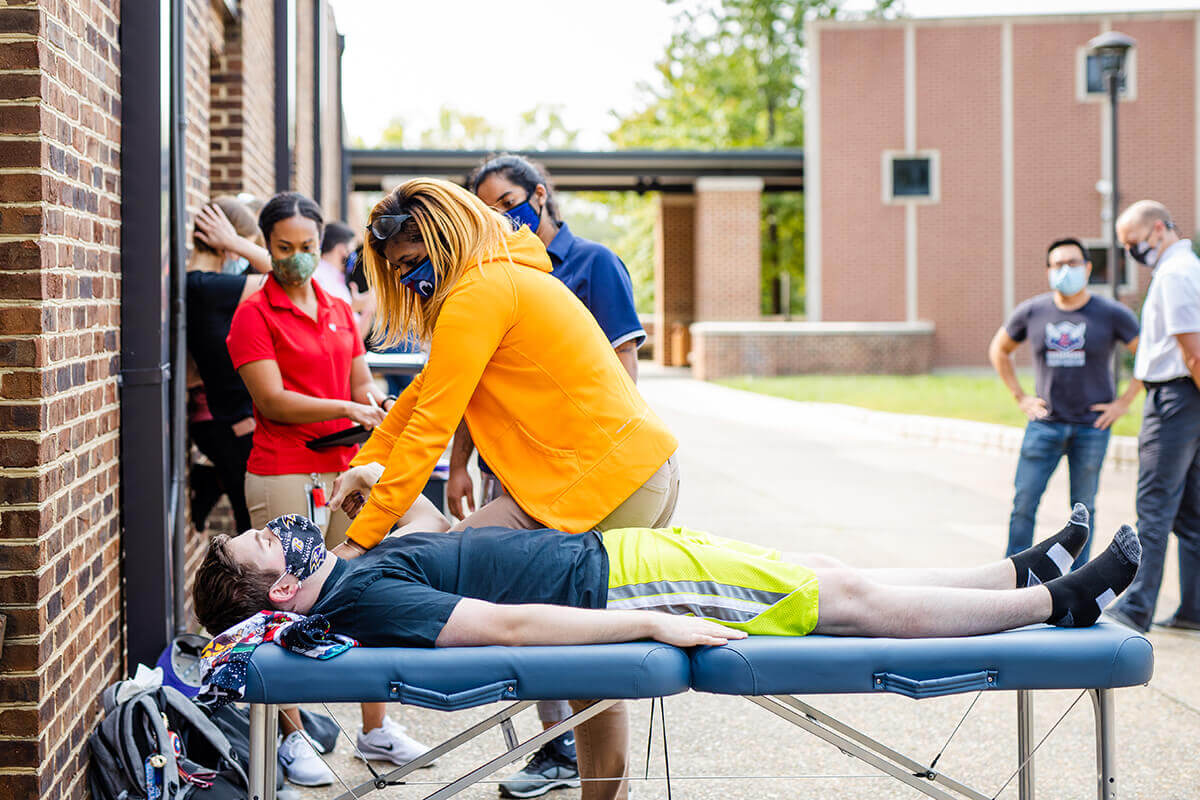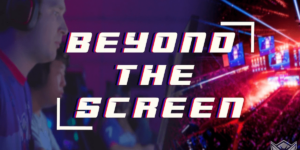Shenandoah University senior Rachel Lee ’21 games every day. As a member of the university’s varsity esports team, Lee gets lower back pain if she slouches and hand pain if she does not hold her hand properly on the controller.
Lee would typically deal with these issues on her own, but this year she has help. Through a new partnership, the Division of Athletic Training is conducting wellness screenings for Shenandoah’s 45 varsity esports players. Doing the screenings are 16 students in the Master of Science in Athletic Training Program and seven from the Doctor Of Physical Therapy/Master Of Science In Athletic Training dual degree program.
This is a new non-traditional clinical experience for us in which we can help our esports athletes. We are looking forward to helping this unique group of students while giving our athletic training students a unique learning experience.”
Rose Schmieg, DHSc, LAT, ATC, PT | Division of Athletic Training Director
How Athletic Trainers Can Help Esports
Athletic trainers are health care professionals who are skilled in injury prevention, emergency care intervention, wellness promotion and rehabilitation of athletes and physically active individuals. In addition to supporting “traditional” athletes, some of the Division of Athletic Training faculty have been providing care for the university’s conservatory students through the Performing Arts Medicine clinic. This fall, the division expanded this clinic to include esports athletes.
According to Dr. Schmieg, esports players can present with several ailments, including back and neck pain and repetitive strain injuries, such as carpal tunnel syndrome and tendonitis of the hand and fingers. These can be caused by sitting for extended periods in one position, poor posture, the position of a gaming chair, and how a player holds the controller.
These students need fast hand-eye coordination. They sit for extended hours in one position. Does this affect their posture or give them musculoskeletal problems? Is their endurance affected? We want to find out.”
Rose Schmieg, DHSc, LAT, ATC, PT | Division of Athletic Training Director
The screenings will also assess a player’s height, weight, blood pressure, posture, flexibility and strength. Their cardiovascular endurance will be tested through a three-minute step test.
Based on the results of the screenings, each esports player will get an individualized exercise program, along with a potential postural correction program, with the athletic training students.
Shenandoah at the Forefront of Esports Evaluation
This is the first time esports athletes have been evaluated and screened at Shenandoah. Nationally, there is very little research on this population regarding injury risk. A 2019 study from the BMJ Open Sport & Exercise Medicine found that esports players, like athletes in traditional sports, are susceptible to overuse injuries. The most common complaint was eye fatigue, followed by neck and back pain. Wrist and hand pain was also an issue. Athletic training faculty are hopeful that through their screenings, they can add to this body of research.
Esports is a growing field and there currently is limited research on the protocols for an injury prevention screen. However, we are utilizing the limited information on injuries to esports players and our knowledge of pre-participation exams and assessments to create our first wellness screen for esports.”
Michele Pye, Ph.D., ATC | Assistant professor in the Division of Athletic Training
Gustavo Canals and Jenna Barr are two students in the Master of Science in Athletic Training program. Studying esports students was a first for both.
It’s interesting. It’s fun to work with a different demographic than we’re used to. They compete in a more sedentary way, instead of running and lifting, so it’s a different turn of the card.”
Gustavo Canals | Master of Science in Athletic Training student
Barr stressed the importance of screening the esports players so that they don’t develop nagging injuries.
It’s important to figure out if they have bad posture from gaming, and we’re just making sure they don’t have any ongoing injuries that could affect them long-term. We want to catch any underlying condition.”
Jenna Barr | Master of Science in Athletic Training student




